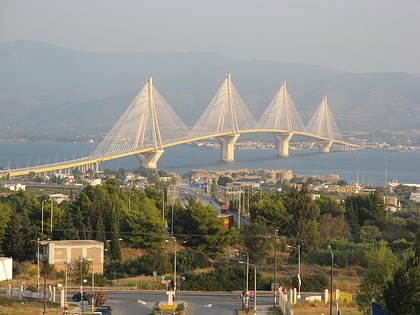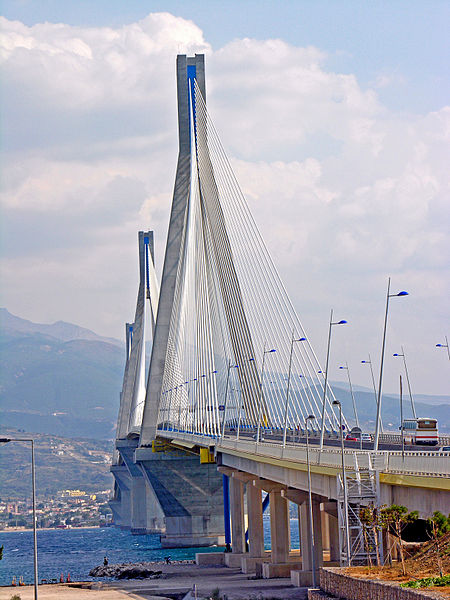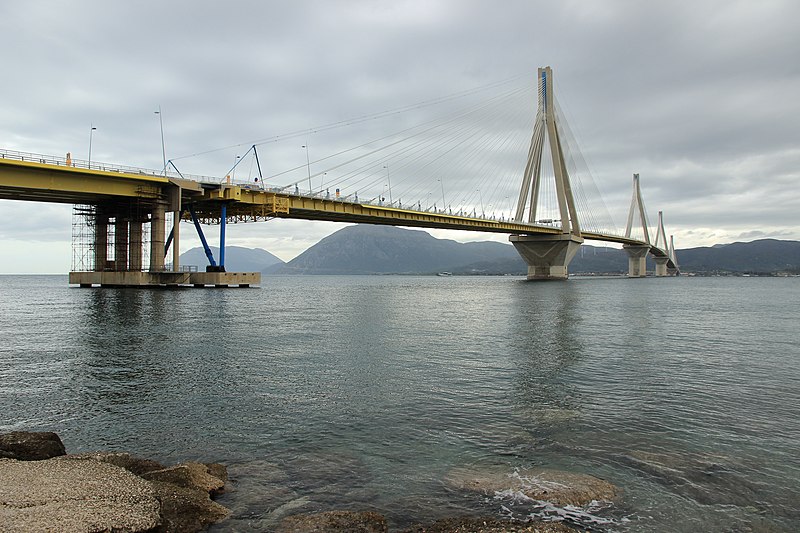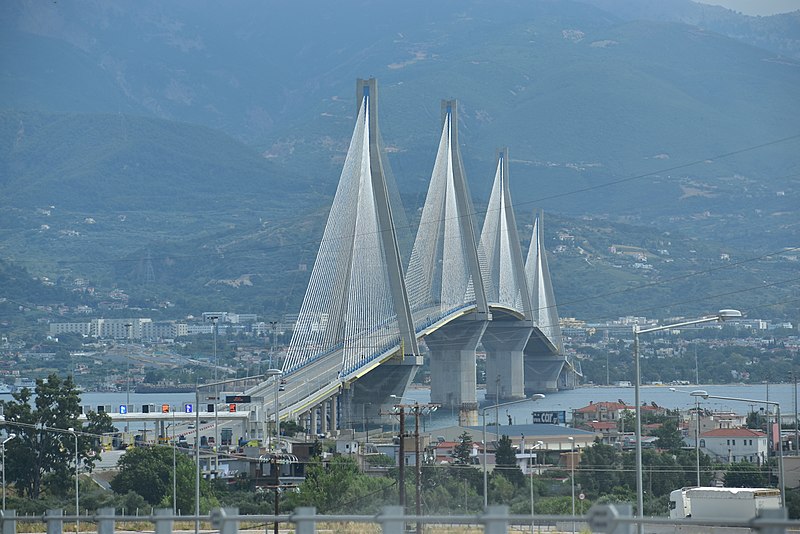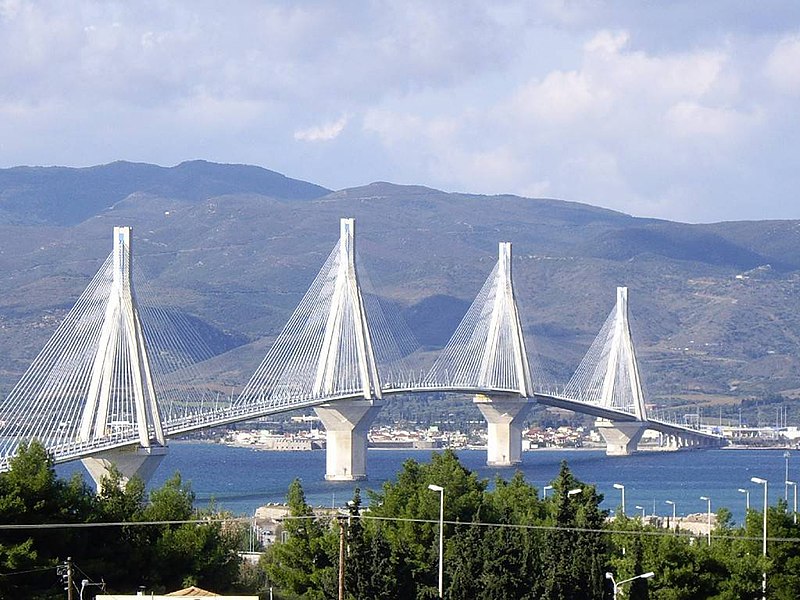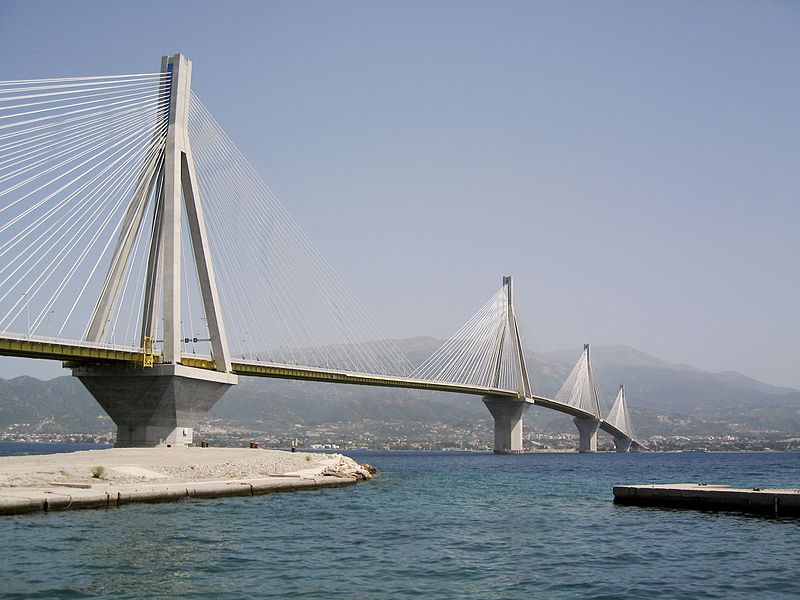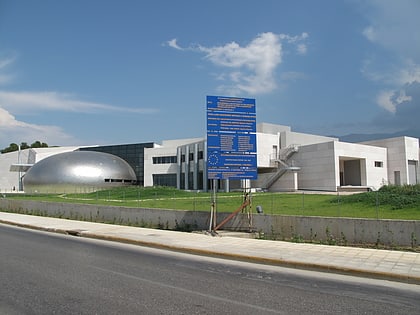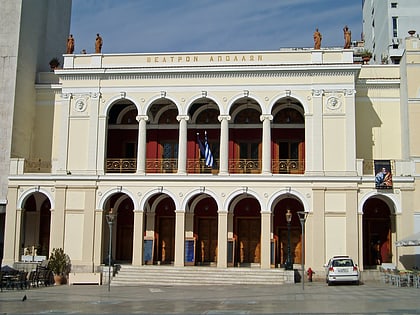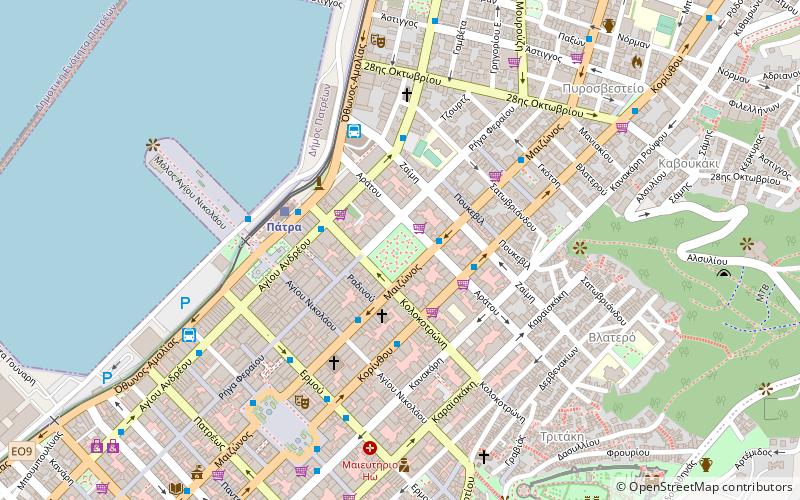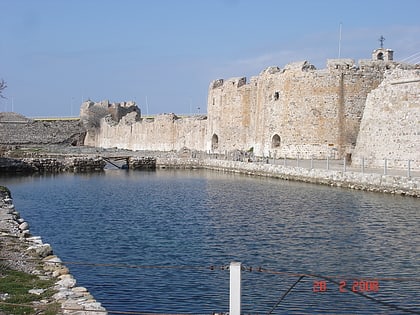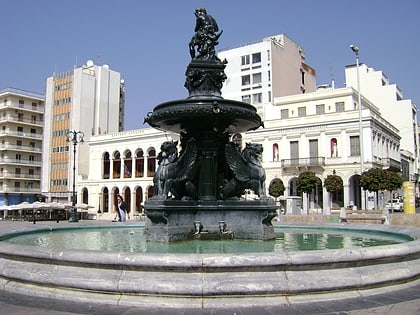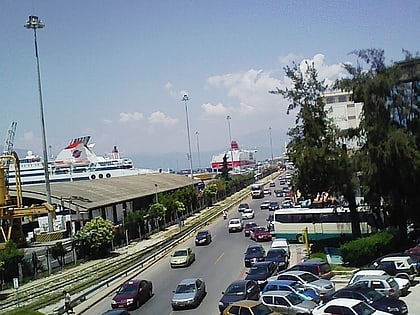Rio–Antirrio Bridge, Patra
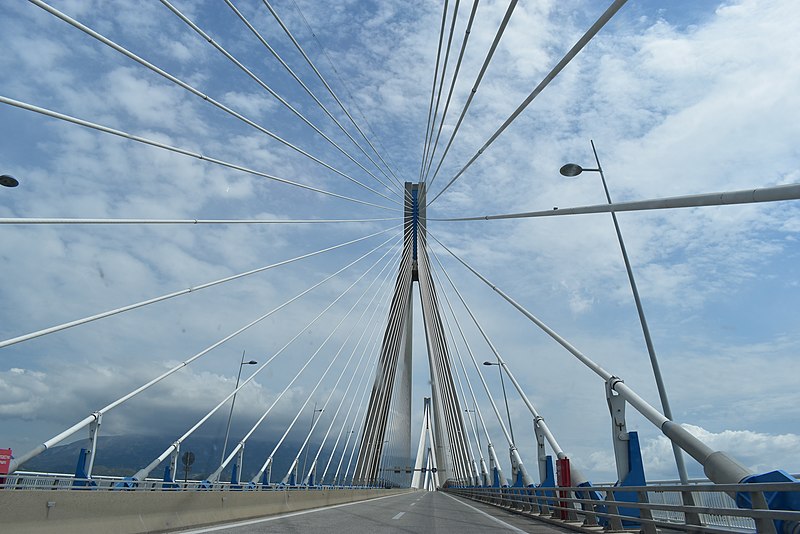
Facts and practical information
Spanning the Gulf of Corinth and connecting the towns of Rio and Antirrio in western Greece, the Rio–Antirrio Bridge stands as an engineering marvel and a significant architectural achievement. Officially named the Charilaos Trikoupis Bridge after the 19th-century Greek prime minister who first envisioned such a crossing, this impressive structure was completed in August 2004, just in time for the Olympic Games in Athens.
With its sleek design and state-of-the-art technology, the Rio–Antirrio Bridge is one of the world's longest multi-span cable-stayed bridges. Its total length, including the access roads, stretches to 2,880 meters, while the bridge itself measures 2,252 meters. The bridge's innovative design accounts for the region's seismic activity, deep waters, and soft seabed, featuring four pylons that rise majestically to a height of 160 meters above sea level.
The bridge not only serves as a critical transportation link, reducing the travel time between the Peloponnese and mainland Greece, but it also stands as a beacon of modernity and progress for the country. It facilitates the flow of goods and tourism, boosting the local economy and enhancing connectivity within the region.
Visitors to the Rio–Antirrio Bridge can marvel at its grandeur and the engineering prowess it signifies. The structure has quickly become one of the most photographed landmarks in the area, especially at night when it is illuminated, casting a striking image against the backdrop of the Gulf of Corinth.
Rio–Antirrio Bridge – popular in the area (distance from the attraction)
Nearby attractions include: Patras Castle, Archaeological Museum of Patras, Apollon Theatre, Ethnikis Antistaseos Square.
Frequently Asked Questions (FAQ)
How to get to Rio–Antirrio Bridge by public transport?
Bus
- Antirrio Bus Station (22 min walk)
